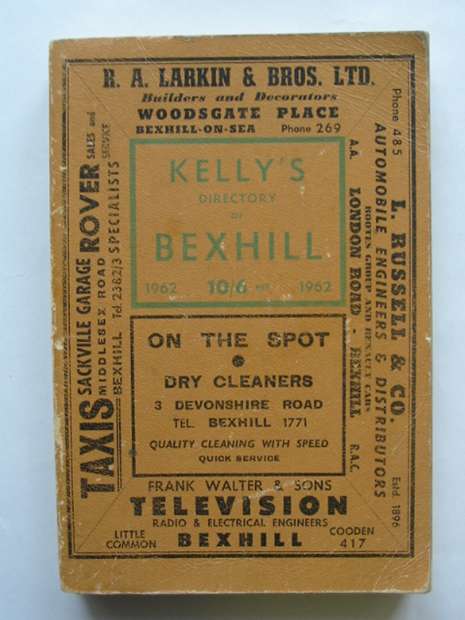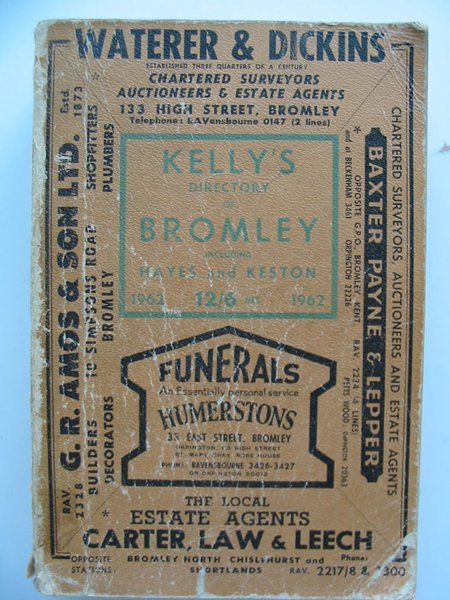Trade Directories
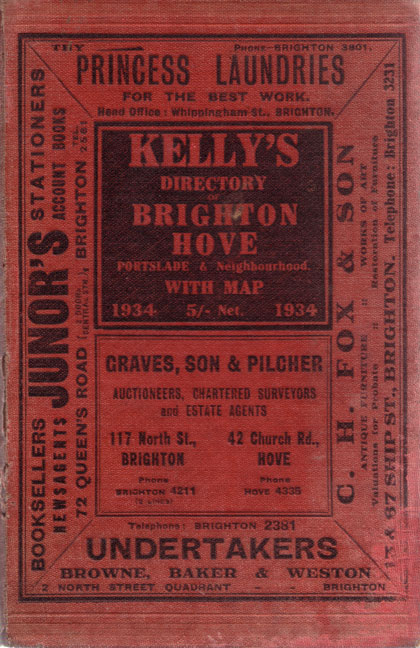 What is a Trade Directory? If, like me, you happen to have been born after 1970, then you may not have come across them before. Simply put, they are the old fashioned equivalent of the Telephone Directories and Yellow Pages rolled into one book.
What is a Trade Directory? If, like me, you happen to have been born after 1970, then you may not have come across them before. Simply put, they are the old fashioned equivalent of the Telephone Directories and Yellow Pages rolled into one book.
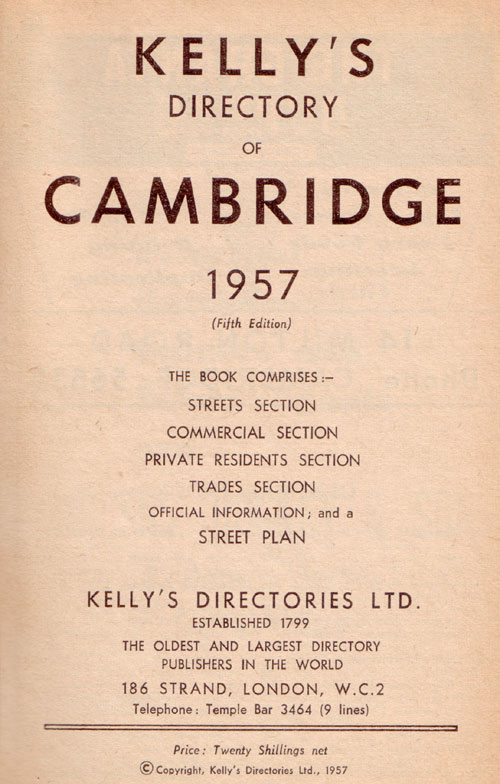 The earliest known directory of London merchants was published in 1677 and is kept in the Guildhall Library in London. However it was not until 1781 that the first national directory was published. It was the industrial revolution and the growth of the British Empire that boosted the publication of directories. Before the second world war the directories were typically split by counties, apart from those for the larger industrial cities. After the second world war they had grown so much in size it was necessary to split the directories into large towns or city volumes, for example, Kelly's Directory of Rochester Chatham, Gillingham , Strood, Rainham and Neighborhoodwould originally have been part of Kelly's Directory of Kent, Surrey & Sussex. A number of companies published these directories including Pigot, White, Slater and Baines, but from now on we are going to focus on those which are arguably the most famous, the Kelly's Directories.
The earliest known directory of London merchants was published in 1677 and is kept in the Guildhall Library in London. However it was not until 1781 that the first national directory was published. It was the industrial revolution and the growth of the British Empire that boosted the publication of directories. Before the second world war the directories were typically split by counties, apart from those for the larger industrial cities. After the second world war they had grown so much in size it was necessary to split the directories into large towns or city volumes, for example, Kelly's Directory of Rochester Chatham, Gillingham , Strood, Rainham and Neighborhoodwould originally have been part of Kelly's Directory of Kent, Surrey & Sussex. A number of companies published these directories including Pigot, White, Slater and Baines, but from now on we are going to focus on those which are arguably the most famous, the Kelly's Directories.
Kelly's Directories was established in 1799 and boasted the slogan "The Oldest and Largest Directory Publisher in the World". Frederic Festus Kelly took over the production of the Post Office London Directory in 1835 and by 1845 Kelly had managed to produce provincial directories which eventually covered every town and village of Great Britain . The majority of the directories continued in annual production until the early 1970's, by which time the telephone had become widespread and with it the telephone directory. The format of production of Kelly's trade directory changed little over all this time and now we will have a look at it section by section.
1) Street Section - this lists the district street by street; and gives the name of the head of the household against each property. (typical page)
2) Private Residents - this time the directory is sorted by surname and following each name is the address, very similar to our modern day telephone directories but without the phone number. (typical page)
3) Commercial Section - lists all the business in the area alphabetically, this is similar to the Yellow Pages (without the phone numbers) in the UK , with some businesses appearing in bold font or with small advertisements. (typical page)
4) Trade Directory - almost identical to the commercial section above but this time sorted by trade. (typical page)
5) Official Information - gives you information such as the names of your local Member of Parliament, the county, parish and district councillors, or who holds the various offices at the County Council, for example the Planning Officer and so on.
6) Street Plan - this is typically found at the end of the volume and gives a detailed street plan of the area. (typical map)
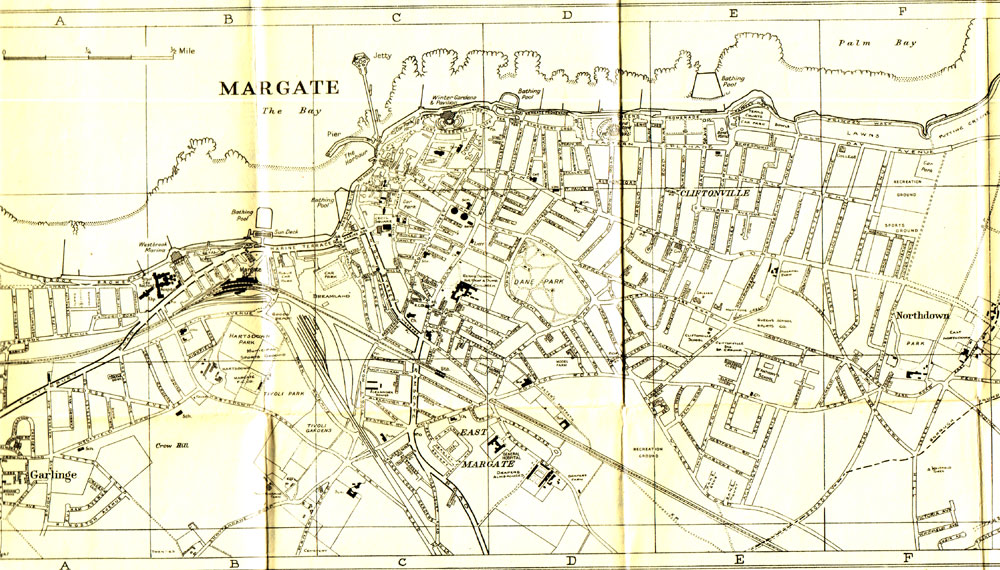
But, like me, you might be wondering why these directories, designed to last for a year and then be thrown away, have become collectable, especially when at first glance they appear full of such dry and out of date information. Well, there appears to be two main reasons why people would like these books now:
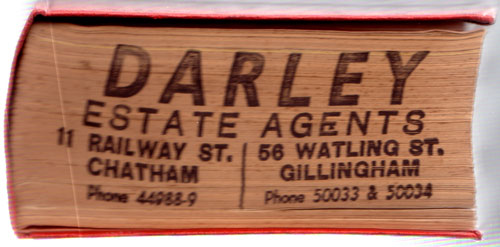
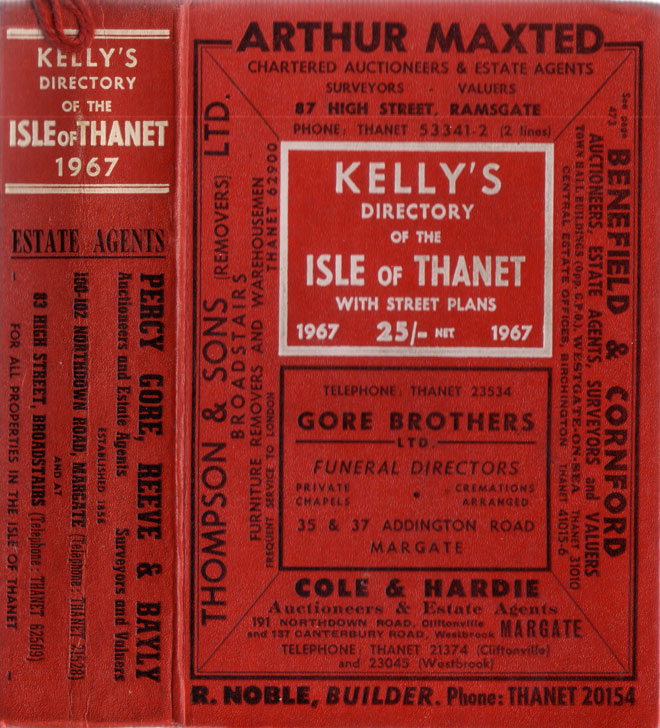
1) Tracing your family history. Although this is not something which interests me, I can see how these books do provide an invaluable source of information. I presume you can narrow your search down to an exact year when a family moved house, or what trade they had. However it does have its limitations; the information published may have been out of date or not updated correctly and the directories only list the head of the household.
2) Social History. This is where the trade section and the adverts come into their own. I have never seen a book with so many adverts as these trade directories - the front cover, spine, rear cover and even the textblock edges contain adverts, indeed there are so many adverts that it can be difficult to make out the title of the book! Similarly inside the book the publisher missed no opportunity to place an advert. As soon as you start reading the lists of trades you can see how times have changed. For example in a 1963 directory there are listings for Milk Bars & Milliners. Now I have to admit that I don't have a clue what either of these actually is, so, if you don't know either, I suggest you try a little research which I will have to do!
I suspect there are many other uses for these trade directories, some of which have yet to be discovered and I'm very glad that some of the directories have survived and are helping people around the world to research their local history or trace their ancestors.
Contributed by Adam Parker
(Published on 30th Oct 2014 )


